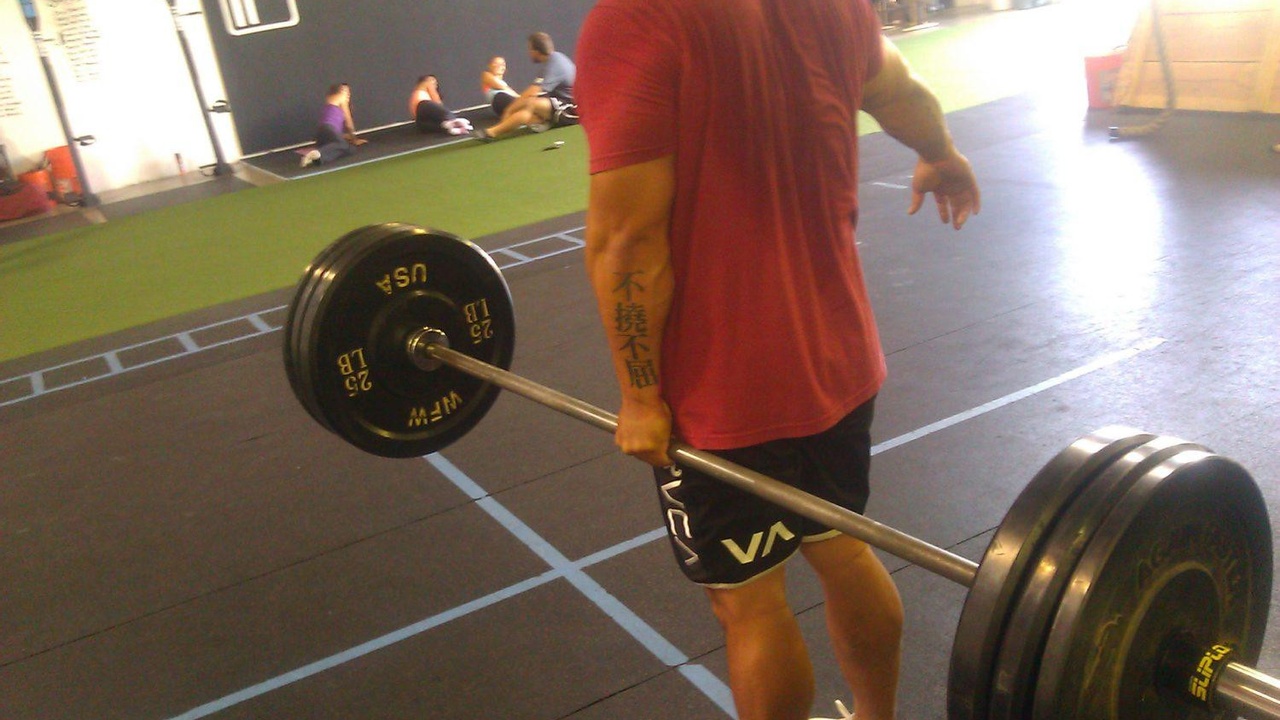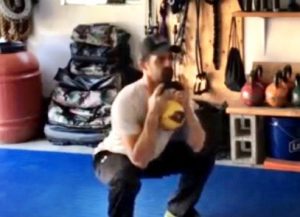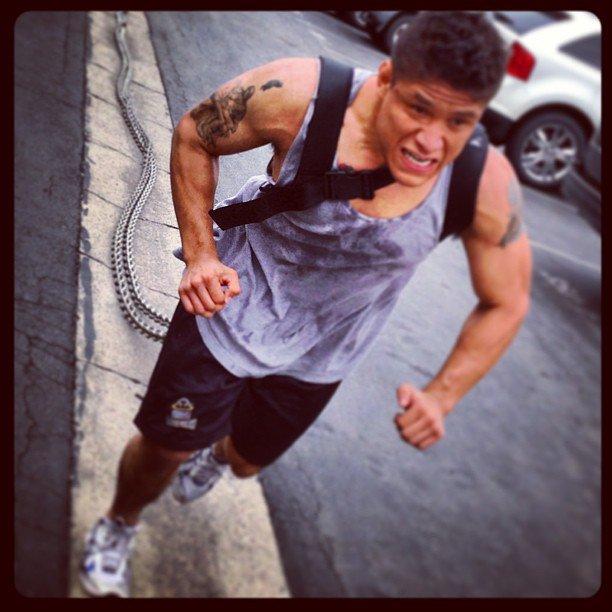
5 Unconventional Strength Training Exercises for Fighters
For the last 30-40 years, bodybuilding routines have dominated gyms, strength and conditioning programs, magazines and every other media source.
Problem is that bodybuilding routines are not the best way for a fighter to prepare for a fight.

Ever seen a big ass dude gas out during a fight?
Of course, we all have and its not pretty.
While there are some lessons to be learned from traditional lifters, fighters need more to perform at their best.
Mixed martial arts is a demanding sport that requires mobility, stability, strength, power and conditioning in an infinite variety of situations.
In order to develop strength that will prepare them for a fight, sometimes we need to move outside the weight room and think outside the box.
**Disclaimer** I'm not bad mouthing traditional lifts. We use them and I believe they have their place in every good program, but I'm about to show you some drills and exercises that we use every week and they have taken our athletes to the next level.
Loaded Carries
Pick up a dumbell, kettlebell or similar and walk.
Many people call these farmer carries, but there are many variations that are beneficial to us.
Loaded carries challenge posture, grip and put stress throughout our entire system. This is great, because most guys go to the gym and do bench press, curls and go home. Carries challenge muscles that translate into mma and other combat sports perfectly.
Do fighters need a strong grip? Yes.
Do most fighters need better posture? Yes
Do fighters need strong backs, core and hips? Yes
The goal with any loaded carry is to stand tall, eyes up, shoulders down and back, and walk for distance. You can carry two dumbells, kettlebells, farmer tubes or similar. You can add Fatgripz to challenge your grip more. You can also carry on one side only, which is called a unilateral carry. This is one of our favorites, because most people have imbalances from right to left. Unilateral carries force us to carry without leaning or tilting to one side.
Start experimenting with a variety of carries over the next few weeks. They are an incredible series of exercises that will pile on strength, correct imbalances and bullet proof that grip.
Crawling
Crawling is a fundamental movement pattern that helps develop coordination, stability and strength throughout the body.
For most people, simply crawling forward and backward is a challenging task, but we can progress beyond that, if needed.
Crawling forward. backward, sideways, in a circle, spinning, with resistance bands, dragging a chain, wearing a vest and more.
There are tons of options and I love this because it is simple, effective and translates well to anyone that spends anytime scrambling, grappling, wrestling, etc.
Bottom line: Every fighter should incorporate crawling into their workouts.
 Kettlebell Front Squats
Kettlebell Front Squats
I'm not sure why squatting with kettlebells is so difficult, but we use these almost every week at our gym.
Traditional squats with a bar are great, but we have had great success teaching proper squats and developing strength throughout the entire body with these great variation.
I first learned about these when I heard Dan John talk at a strength and conditioning summit in Long Beach, CA.
He spoke about what he called the Goblet Squat and swore that it was his favorite, most effective squat series he had ever used or taught athletes.
Here's basically how it works:
- Hold a weight against the chest. If you have a kettlebell, grab it by the horns; with a dumbbell, hold one of the heads up vertically between your palms.
- Position your feet so your stance is a smidge outside shoulder-width, with your toes pointed slightly out. If you're taller, you may need to widen the stance a little more.
- That is, sit back and down between the knees, keeping your chest up the whole time. Make sure you're not falling forward or rounding your back.
- Go down as low as you can while keeping your feet flat on the floor. If your heels come up, your stance is still too narrow.
- At the bottom, brush your elbows down the inside of your legs and push your knees out.
- Shoot back up and stand tall at the top.
Simple enough, right?
Here's a great video from Steve Maxwell to explain in more detail.
Wanna increase the difficulty? Use two kettlebells, in the rack position, and perform squats similar to above description.
*Beware* Do not progress too quickly. Even though these are simple, they can be incredibly humbling. I've seen guys that could front squat 275lbs on a bar, struggle with two 24kg bells.
Take your time, do 'em right and add intensity and difficulty over time.
 Climb a Rope
Climb a Rope
Lat pull downs and pull ups are great, but climbing a rope incorporates your grip much more and still challenges all the 'pulling' muscles.
Of all the people we've tested in the gym, very few can climb a rope on their first try. Most of us rarely test our grip, much less, pull ourselves up a rope on a consistent basis.
For most people, they have never done and thinking they should would be a mistake.
The first few times I have people do this exercise, I have them simply grab the rope with both hands, lean back and keep their feet on the floor.
This changes the exercise into more of a row, but I have found that this is a better variation until they develop sufficient upper body strength to actually start climbing.
Once you've adapted to the row variation, then we move onto other progressions that lead up to climbing the rope.
These include using a bigger rope, doing short climbs, assisted climbs and more.
Remember, the goal is to get stronger, not killing ourselves by climbing to the ceiling, losing your grip and falling 20 feet on your ass.
 Dragging Stuff
Dragging Stuff
For years, strength coaches have been talking about the benefits of dragging tires, heavy sleds, chains, cars and more.
You've probably seen strong men pulling trucks and airplanes...this is similar...just much, much lighter for most of us!
All you need to do is put a belt or harness on, attach resistance and get to work.
I have people drag heavy stuff while walking, lighter stuff and sprinting, as well as backwards and laterally.
My personal favorite is dragging chains. At our gym we will do half mile drags for time and sprint with varying loads for short distances.
This is an incredible way to build strength in your feet, legs, and hips.
*Tip* If you are dragging a tire, sled or similar, be sure to use a long enough strap (8-10 foot or longer). This will make the run smoother and its less likely that it will bounce when sprinting.
Used wisely, these four exercise variations will strengthen weak links, build character and elevate your strength like nothing else!
We will continue to dive into more detail over the next few months, but if you have any questions, shoot em our way.
PS...feel free to share this article with your training partners and coaches.
This stuff would be good for your whole team!




